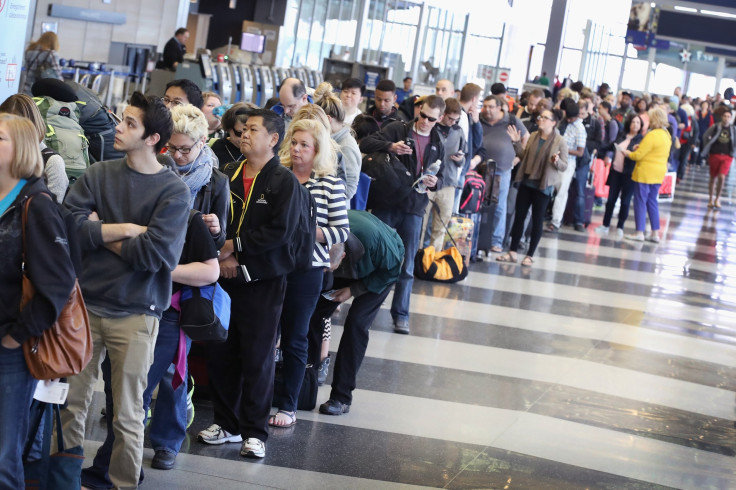TSA Screening Guidelines: Agency Knows Method Is Unscientific And Uses Racial Profiling, ACLU Says

The Transportation Security Administration’s (TSA) behavior detection program is under scrutiny by a new report released by the American Civil Liberties Union Wednesday. The nonprofit said the TSA knows the screening tactics used by the agency are “unscientific” and “unreliable.”
Through the detection program, TSA officials nationwide look out for behaviors that are associated with fear, stress or deception. Officers then flag certain individuals for a more thorough inspection and questioning. However, the tactics have been linked to racial profiling, according to the report.
The analysis comes after President Donald Trump’s immigration executive order barring individuals from seven predominantly-Muslim countries from entering the United States. The order spurred protests across airports nationwide.
The ACLU claims the program has long been criticized as “unscientific, ineffective, and wasteful,” adding that it has been blamed by passengers for racial and religious profiling. The report also said agency officers themselves believe the program includes racial and religious profiling, something former TSA officials have said before. One former TSA official called the screening program a “racial profiling program,” according to a 2012 New York Times report.
“Given the anti-Muslim policies coming from the Trump administration, the TSA should not be allowed to retain a program that can be used as a cover for racial and religious profiling,” the ACLU said.
The nonprofit reviewed 13,000 documents obtained from the TSA through a Freedom of Information Act lawsuit, which reveal the TSA’s own files discredit the screening process.
Among documents seen by the ACLU were various files that show bias against Arabs, Muslims and those of Middle Eastern or South Asian descent. The documents included an image used in a 2012 TSA-authored presentation titled “Femme Fatale: Female Suicide Bombers,” which stereotyped Muslims and women.

The documents also included records of investigations into alleged profiling through the behavior screening by officers in Newark, Chicago, Miami and Honolulu.
“Those records highlight the ease with which behavioral indicators can be used as a pretext for harassing minorities and disfavored groups,” the ACLU said.
Documents also show the TSA expanded its behavior detection program and surveillance techniques. For example, in 2009, the TSA broadened the program beyond security checkpoints at airports, allowing program officers, some on plain clothes, to scatter throughout the entire airport and keep an eye on travelers. Officials also engaged in casual conversations to get more information from passengers.
“These techniques are troubling because travelers likely will assume that they may not simply ignore officers who converse with them,” said the ACLU, adding that avoiding contact with behavior detection officers can be deemed suspicious to officials.
The agency also overstated the scientific validity of the program, repeatedly assuring members of Congress that the process uses “objective criteria” and by saying it is “supported by leading experts in the field of behavioral science and law enforcement,” according to the ACLU.
Apart from the ACLU, government auditors, members of Congress from both parties and independent experts have previously criticized the screening program.
“The TSA should phase out the behavior detection program. The available information shows that the program lacks scientific support and threatens civil liberties,” the ACLU concluded.
The nonprofit said the agency should also implement “a rigorous anti-discrimination training program” for all agency workers.
The TSA responded to the report and stated the agency “stands by its Behavior Detection capability.”
“TSA’s behavior detection approach is designed to identify and engage individuals who may be high-risk (e.g., possess malicious intent) on the basis of an objective process using behavioral indicators and thresholds, and then route them to additional security screening,” the agency said in an emailed statement. “It is one element of TSA’s efforts to mitigate threats against the traveling public, and is critical to TSA’s systems approach to deter, detect, and disrupt individuals who pose a threat to aviation.”
© Copyright IBTimes 2025. All rights reserved.




















